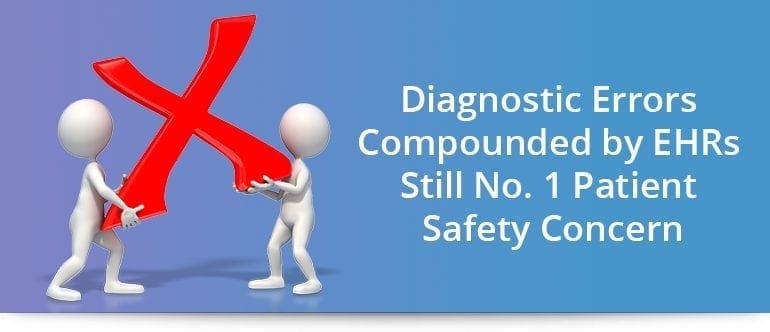Call us toll-free: 800-878-7828 — Monday - Friday — 8AM - 5PM EST


By Meg Bryant for Healthcare Dive
Dive Brief:
- For the second year in a row, diagnostic errors and improper management of test results in EHRs top ECRI Institute’s list of patient safety concerns facing healthcare leaders. The list is intended as a starting point for organizations to review their patient safety records and set priorities for improvement.
- Other major issues include overuse of antibiotics, clinician burnout and the growing but loosely regulated use of mobile health technologies in the home, according to the 2019 Top 10 Patient Safety Concerns list.
- “We have to recognize the limits of current technology and ensure that we have processes in place to close the loop on diagnostic tests,” William Marcella, executive director of operations and analytics for ECRI Institute’s Patient Safety Organization, said in a statement. “This safety issue cuts across acute and ambulatory settings, requiring teamwork across the health system.”
Dive Insight:
Patient safety is a major concern for hospitals and health systems, impacting patient outcomes as well as a healthcare facility’s quality, reputation and financials as more payers reimburse for value rather than volume.
Diagnostic errors once again topped ECRI’s list of patient safety challenges this year, released in conjunction with National Patient Safety Awareness Week. Part of the problem is EHRs, which help to track test results and flag issues, but can’t provide a diagnosis, ECRI notes. Still, providers must document patients’ diagnoses, treatments and follow-up plans in EHRs so that future clinicians can understand and act on the information.
To fight antibiotic resistance, which claimed the second spot on the list, ECRI recommended providers ask four questions before administering a drug: Does the patient’s infection respond to antibiotics? If the answer is yes, is the patient getting the right antibiotic, dose and route of administration? Would a more targeted antibiotic work better? How long should the patient receive the antibiotic?
To reduce burnout, experts suggested organizations look beyond EHRs and address provider concerns about workload, performance criteria and poor resource allocation on a system-wide scale. “Leadership must strive to make providers feel they are treated as human beings, whose opinions and abilities are valued, rather than as cogs in a wheel,” the report says.
The increasing use of mobile health technologies brings with it a number of safety concerns, from lack of regulation to ensuring data are accurately transmitted to providers and patients actually use the device, according to the report. To improve safety, organizations should establish steps for informing providers when user errors occur or devices go silent. They also need protocols for identifying patients who will benefit from these devices and train providers and patients on how to use them.
The report also shines a light on behavioral health, noting provider unease and inexperience can lead to overlooking patients’ needs or exacerbation of symptoms. Efforts to address the issue include establishing behavioral emergency response teams within hospitals and additional training for providers.
Rounding out the list of top patient safety concerns are problems related to medical staff’s development and maintenance of skills, standardization of safety efforts across large health systems, detection of changes in a patient’s condition, early recognition of sepsis across the care continuum and infections from peripherally inserted IV lines.
